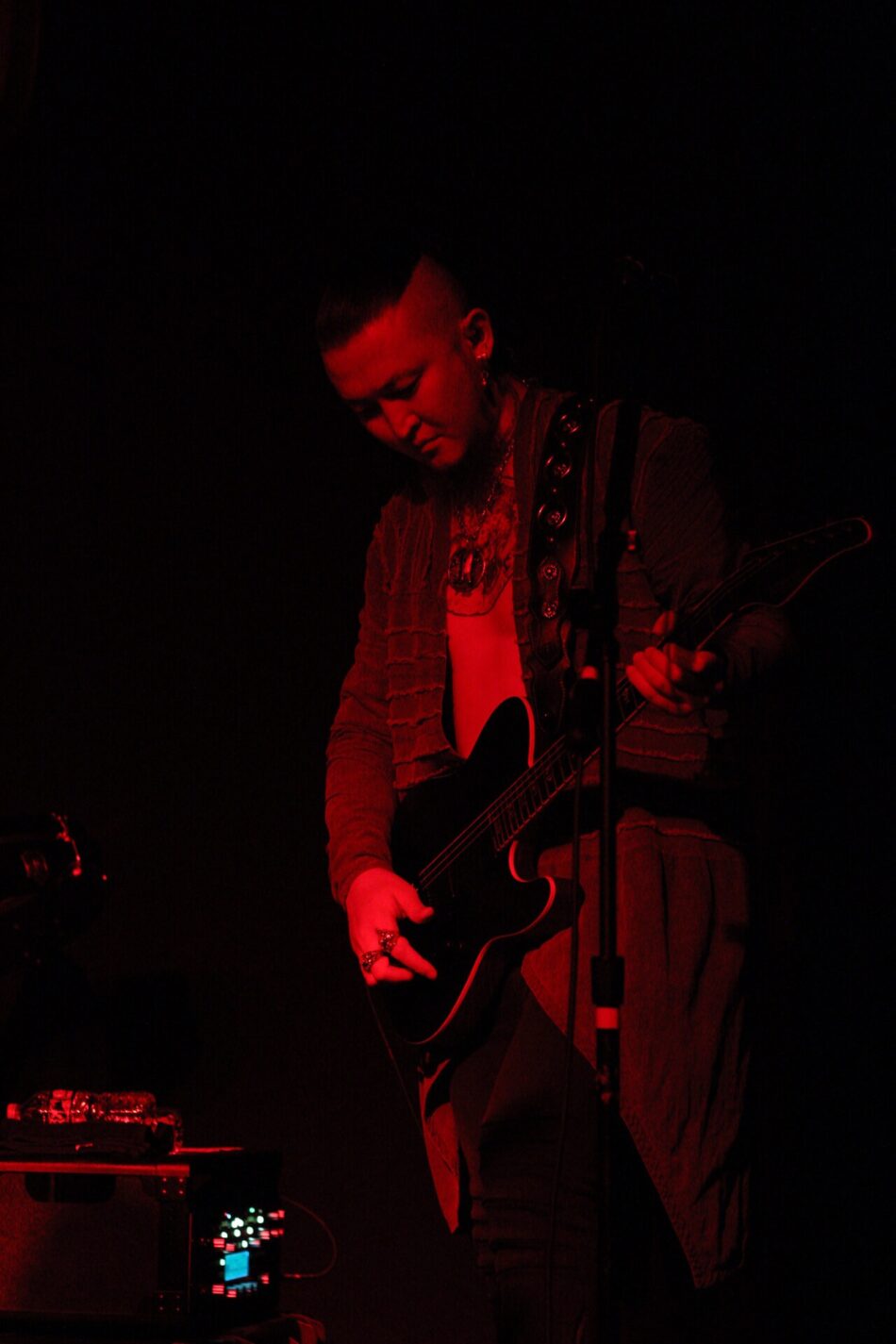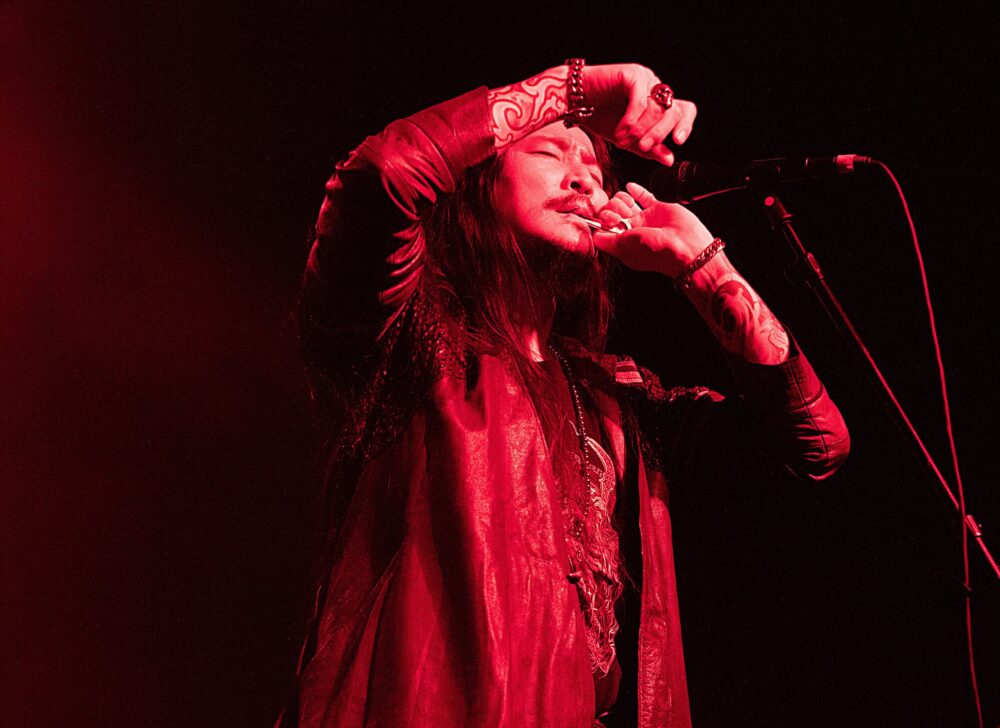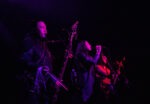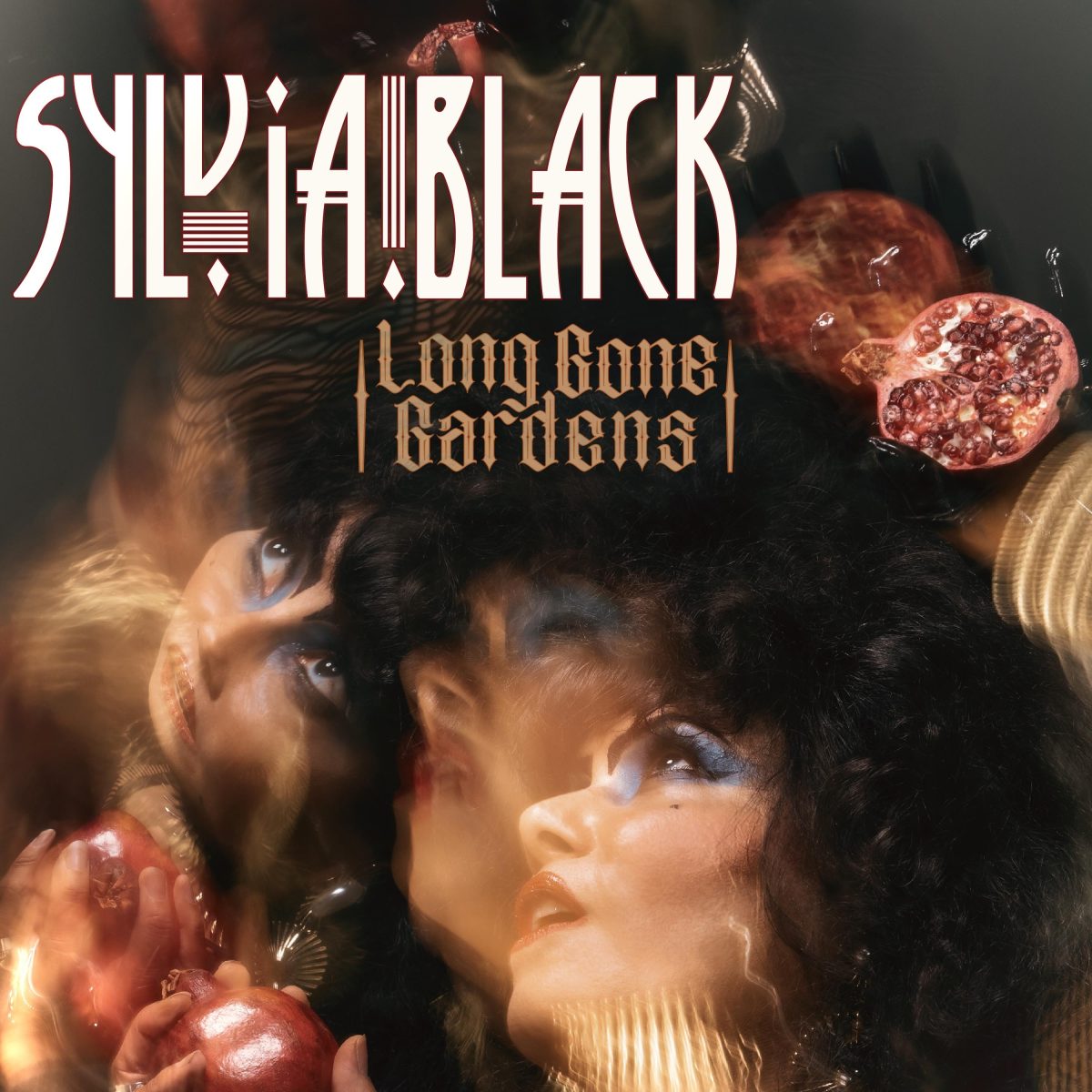
photo credit: Lisa Melograno
Written by Lisa Melograno
“HU! HU! HU! HU!” shouted the crowd, as fist pumps and chants escalated in volume, and intensity filled the air at Theater of Living Arts (TLA) last night. The TLA, with its large chandeliers and dark red draperies, is known to welcome both established bands and solo artists, as well as new and up-and-coming artists, as well, so it isn’t surprising to have such a distinctive band as The HU come through the TLA.
The TLA is located in the heart of South Street’s business and entertainment district. South Street runs East to West across the city, connecting the more suburban South Philly area to Center City, the cosmopolitan area.
As the headquarters of counterculture in the city, The HU could not have picked a better venue to perform at in Philadelphia. After all, South Street is the “hippest street in town.”
As The HU took to the stage, the chants subsided when an equally leather-clad group of men began playing their instruments and singing in their native tongue. The HU wore leather that was embellished with emblems and symbols of Mongolia. Most of the concert attendees were garbed in heavy metal attire consisting of black T-shirts, vests, and leather.
If you’re unfamiliar with who The HU is, The HU is a Mongolian folk-rock and heavy metal band that formed in 2016 from Ulaanbaatar. The band’s name translates to the Mongolian root word for “human being.”
The HU‘s four core members, Gala, Jaya, Temka, and Enkush, use traditional Mongolian instruments that date back nearly one thousand years. By utilizing such one-of-a-kind instruments, the group has created a unique and exhilarating sound and experience.

photo credit: Lisa Melograno
The Morin Khuur, a two-stringed horsehead fiddle has strings and a bow made of horsehair and can replicate the sound of horses galloping. The four-piece also uses instruments including the Tovshuur, a Mongolian guitar, and a Tumur Khuur (jaw harp) along with a technique called “khoomei,” known as throat singing. This technique of singing requires the singer to produce a low constant sound, while simultaneously produces higher tones creating harmony. The blending of these Eastern techniques with Western contemporary musical styles has produced a unique style that The HU calls “Hunna Rock, which is a blend of Mongolian traditional music and contemporary rock music.”
“Shoog Shoog” was the first song on the setlist, and although the audience could not understand the lyrics, it did not stop them from rocking and moving to the music. Jaya, the lead singer whipped his long flowing hair back and forth, as he belted out lyrics. The other members had their hair tied up in traditional Mongolian ponytails.

photo credit: Lisa Melograno
When The HU performed “Wolf Totem,” the crowd went wild. The pulsating beats and rhythm that followed the whistling of the birds seemed to feel as though you were a warrior in battle; a battle that could be men in biker attire on Harleys or men in traditional warrior attire riding horses.
“Wolf Totem” topped out on Billboard’s Hard Rock Digital Song Sales at number 1 on April 11, 2019. This was the first time a Mongolian band was on any of the Billboard charts. They are also the first foreign band on this chart, which sings in their native language.
The “Wolf Totem” video along with the “Yuve Yuve Yu’s” video together have gained over one hundred million views on YouTube. Because of their success, The HU had the privilege of meeting with the Mongolian President Khaltmaagiin Battulga, in 2019. He congratulated them on the honorable deeds that they were doing to promote their country. They were awarded the “Order of Genghis Khan,” Mongolia’s highest award.
Despite the language difference, the language posed no barrier at the show. The HU‘s lyrics are cultural references to old Mongolian war cries and poetry. Heritage and pride are important to the members of the group. Although they sang in their native tongue, The HU was able to command the attention of the audience the entire evening. When Jaya yelled out “Let’s Rock” in a thick heavy accent, the crowd went wild.
They played a mix of old and new songs, with a few that have not been released yet. The newer songs were more subdued and included more Mongolian influences and Western folk influences. They performed every song with the same passion and emotion and the crowd responded just as excited and enthusiastic as they did with the previous song.
The HU also added in a performance of Metallica’s “Sad But True” as their encore. The track was a fitting choice for these classically trained, Mongolian musicians, influenced by Western rock.
Last week, South Street was the epitome of the music subculture it has created. The HU did not disappoint and proved that music is an international language that joins people together. Their technical skill and classical Eastern training have collided with Western culture and rock music to create a fresh new sound.
The HU themselves have described their music as, “Hunnu Rock. The word Eastern meets Western, and the past meets present. The genre is very dynamic, as it can be metal, but it can also be classic rock.” Elton John, himself, described their music as, “Just the greatest new thing I’ve heard in a long time.” The HU‘s sound has had a profound effect on the West, showing us that music has no cultural, language, or national boundaries.
Connect with The HU
Website | Facebook | Instagram | Twitter | TikTok | YouTube | Spotify






















